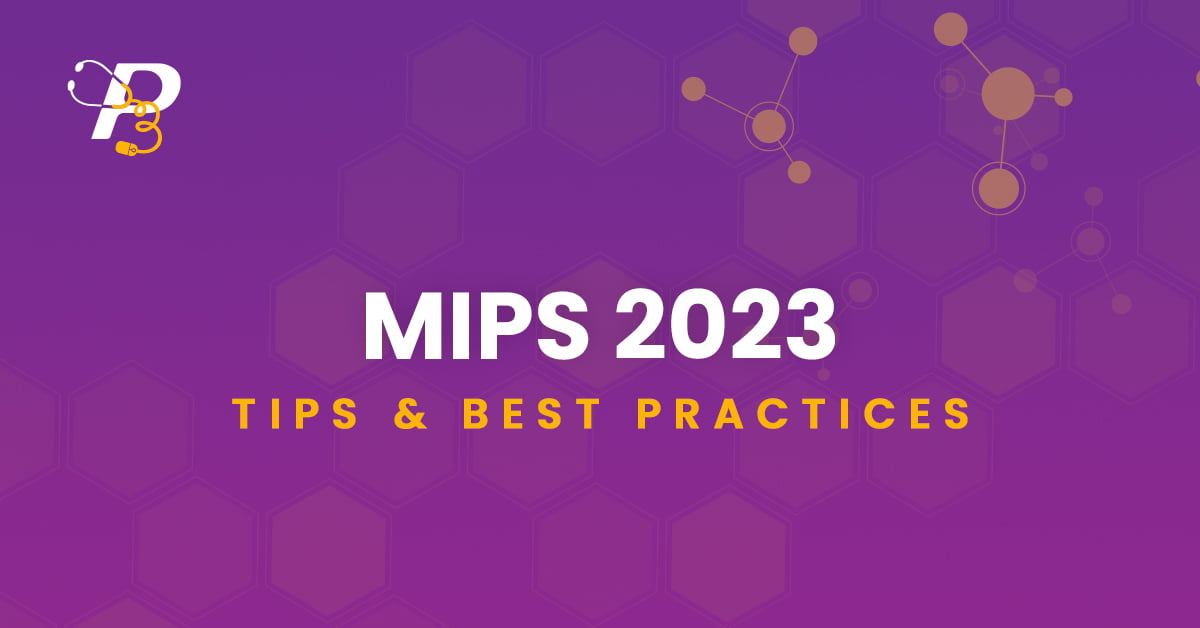How to Earn a Positive Payment Adjustment in MIPS 2023?
MIPS represents a framework for providers’ accountability and their part in promoting standardized care. Every year, it gives them an open invitation to select their reporting measures and perform well. CMS then evaluates their performance and assigns a suitable score and corresponding payment adjustments. Right now, we have taken a jump start on MIPS 2023 with a strict set of reporting rules and requirements. So, how have you planned to even out the positive adjustments on your Medicare claims this year?
How to Score High in MIPS 2023?
Whether you’re an experienced MIPS participant or a novice, the program can be confusing for you. You may feel stressed with the new modifications in the MIPS program for PY 2023. Do you know that QPP has introduced MIPS Value Pathways for MIPS participants? This year, CMS has made it a voluntary option to encourage clinicians to adopt it. Now, considering the upcoming cuts to Medicare revenues, it becomes worth putting in extra effort.
Here are some helpful pointers for your practice if you’re unclear on how to maximize your MIPS score (where to start).
Determine MIPS Eligibility: Are You In or Out?
It is the first and foremost thing that you must do at the beginning. Find out whether the MIPS applies to your practice or not. Are your clinicians eligible for MIPS 2023 as individuals? CMS has mentioned the criteria for this. If your practice fulfills this criterion, you must take part in MIPS data submission. The criteria for MIPS participation are:
- Serve 200+ Medicare patients.
- Bill at least $90,000 to Medicare annually.
- Provide 200+ professional services.
Also, you can enter your NPI in the QPP Lookup tool for eligibility verification.
Note: Freshly enrolled providers may become eligible later in the year or early next year.
Make It a Team Effort: Synergy in Action
Round up your medical crew for MIPS 2023 reporting. It’s better if you include 3 to 4 staff members in your participation plan every year. Another suggestion is to add members belonging to different areas of your practice. For example, you can think about adding an office manager or a front desk administrator.
- Team up with the members who will be directly caring for patients.
- Configure your team to meet the demands of your practice. Staff should be hired from each location if you have several sites.
- The IT or computer support person you have on staff can be a useful addition.
- If anyone in the office has any previous MIPS experience, you should also think about including them.
Gather Educational Resources
CMS actively updates the participants about the new reporting requirements and measures. It uploads the resources and webinars at https://qpp.cms.gov. You must count on them. It will be good to sign up for the portal. By doing so, you will get listservs and newsletters for MIPS-related updates throughout the year.
Meanwhile, CMS has emphasized the use of certified EHRs in healthcare facilities. So, we can say that MIPS 2023 reporting depends on EHR integration and usage. Therefore, you must collaborate with your EHR vendor to get help with data collection.
Develop a Plan
Now, make a striking strategy to hit the maximum performance threshold in MIPS 2023. You must allocate sufficient time and resources for the development of an effective plan. You can call periodic meetings to discuss the progress report and revise the strategy. Thus, all this will help you track the progress in MIPS throughout the year. Also, you will be able to distribute your workload.
Before proceeding, have a conversation with the practice owners. By doing so, you can determine their level of support for this initiative.
- Assess their understanding of how MIPS operates and inquire about their goals.
- Are they aiming to maximize incentives or merely avoid penalties?
- Explore whether they are willing to invest in technology for assistance with MIPS compliance.
- Discuss how the owners would like to be involved.
- Are they open to appointing a physician champion, or would they prefer quarterly progress reports?
Assess Measures and Data Collection Options
Remember, MIPS requires showcasing your work through accurate and complete documentation. Also, you must keep a check on the appropriateness of EHR fields. To optimize MIPS data collection, collaborate with your superiors. Evaluate clinicians’ current MIPS performance by extracting data from the EHR.
Moreover, the MIPS 2023 measure guide is available on official platforms. Use the eCQI Resource Centre to carefully study the measure requirements. In addition, your EHR vendor can help you determine which measures are recorded by your specific system. Use qualified clinical data registries (QCDRs) to track performance data in specialty practices.
Then, focus on the important metrics that have room for improvement by asking:
- Which actions will have the most impact?
- Which initiatives will need the least effort?
- Which changes could get the most support from the staff?
Keep a positive attitude and avoid blaming anyone for poor performance while you analyze the data. Create a team approach for your improvement initiatives. Consider systemic problems by asking:
- What is impeding overall performance when you take a step back?
- Is it an expertise gap?
- Staff resistance or workarounds—which is it?
- Do the tasks need to be documented, or if so, where should they be?
Keep a Record
All MIPS-related material should be gathered in one place to ensure its longevity. Don’t let your efforts go in vain! Consider making a binder for every MIPS year. This strategy has several benefits, including:
- Simple access to data spanning many years
- Continuity as new team members are added
- Critical documentation assistance in audits
Audits may take place several years down the road, so having a designated repository for all required documents is essential. Create a backup copy of your MIPS documentation binder every year, in either digital or paper form. Also, keep it safely in a different place, such as a different office or a secure facility. PHI should always be handled with care, and access should only be granted to those who are authorized.
Conclusion
While the QPP and MIPS are constantly evolving, there is a wealth of resources available to guide you. Despite the dedication of time and manpower required, tackling MIPS is highly worthwhile. So, by participating effectively, you can secure positive performance-based payment adjustments. Moreover, the focus on quality within MIPS contributes to maintaining a healthcare system that prioritizes and delivers excellent patient care. Embrace the opportunity to enhance both financial outcomes and the overall quality of care. All we need to do so is an active engagement with MIPS. Meanwhile, contact our experts at P3 Care to get our MIPS consulting services.














Leave a Reply
Want to join the discussion?Feel free to contribute!